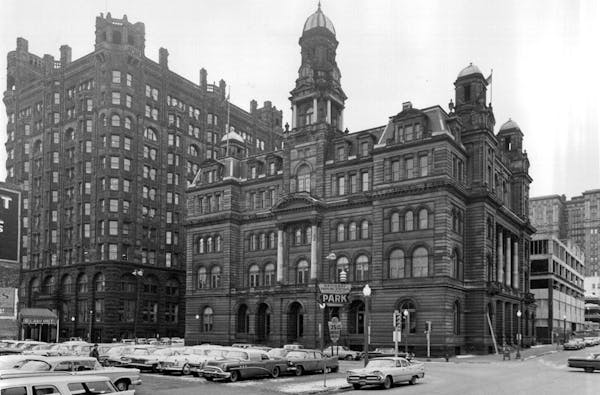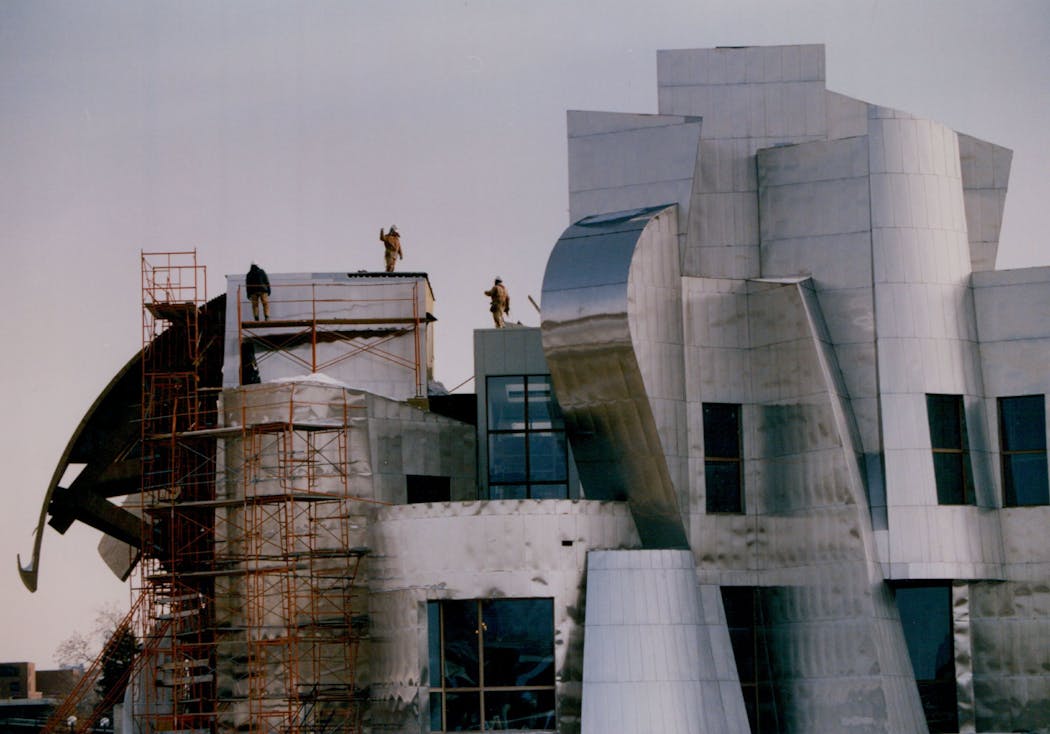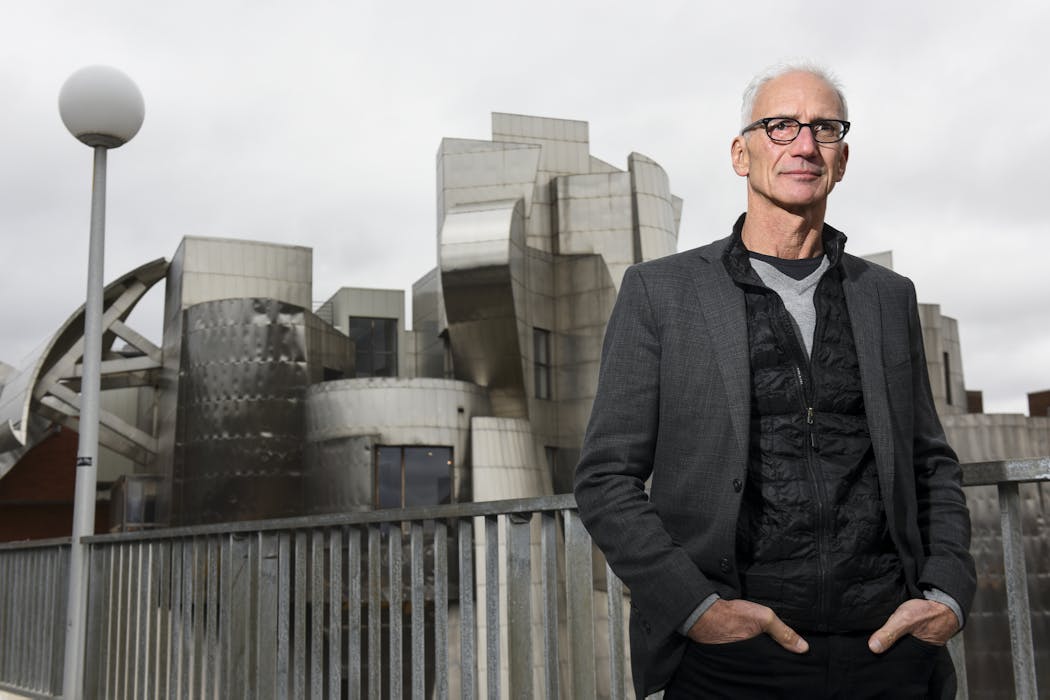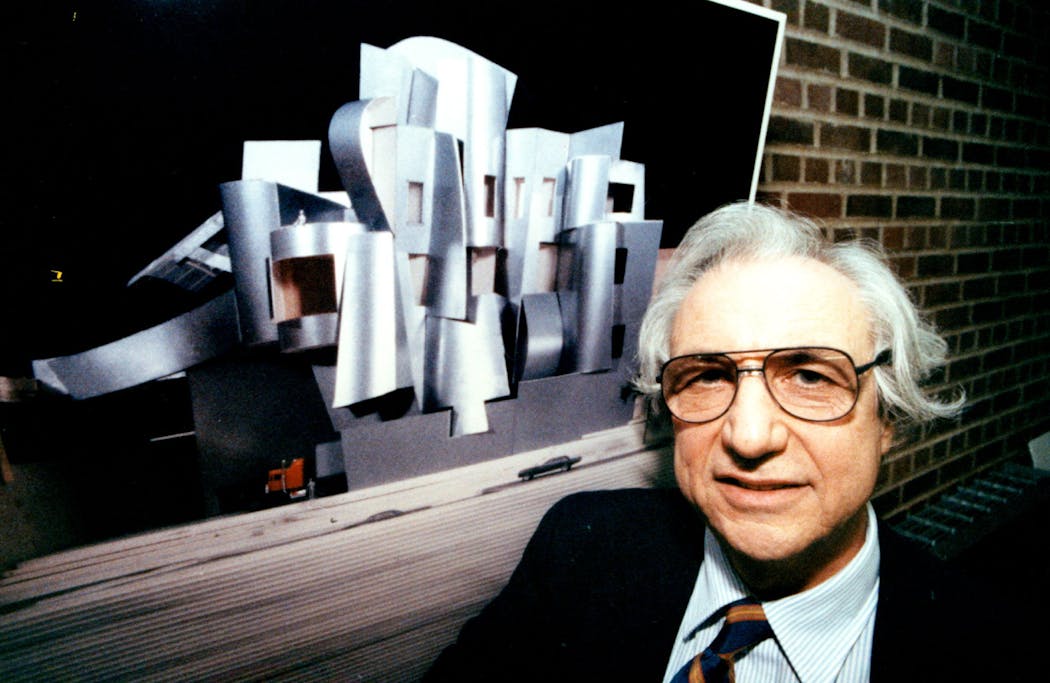Before there was the Guggenheim Museum Bilbao, Walt Disney Concert Hall or many other billowy, gleaming, world-famous buildings designed by architect Frank Gehry, there was the Frederick R. Weisman Art Museum.
At the time, Minnesotans weren't entirely unfamiliar with Gehry (the Walker Art Center had staged a retrospective of his work in 1986), but the Weisman — with its rippled, metallic facade facing the Mississippi River and its airy, serene galleries — became a talked-about Twin Cities landmark the moment it opened on the University of Minnesota's Minneapolis campus in 1993.
John Cook was the local executive architect on the original project, as well as its 2011 addition, also designed by Gehry. During a recent stroll through the museum, Cook reminisced on the building's tight budget, the ins and outs of its famous stainless-steel exterior and the experience of collaborating with the man who is now probably the country's — if not the planet's — most famous living architect.
Q: Can you describe Gehry's design process?
A: He had all of these program elements — the garage, galleries, lobby, auditorium, offices — built in wooden blocks, representing approximate area and volume. He built a site model — it had been a surface parking lot — and he takes this box of wooden blocks, dumps it on the site model and says, "This is your building."
Q: Was that unusual?
A: At the time — I think I was about eight years out of school at that point — I thought that it was a strange way to go about designing a building. But his process was not too far from taking those elements and stacking them to get the right relationships and the right massing with one another.
The beginnings are always very primitive. Of course, then he gets into using other mediums, like paper and cardboard. There's a lot of push and pull. The process is more additive than deductive. Some people would say, "This is a block that's carved," but really, it's a block that has things added to it.
Q: How did that curvaceous, Cubist facade come about?
A: At one point, it was very straightforward: a grid, with windows, offices, a lobby, a perch. But then he began to talk about how the views of the river are really important, and that it's not necessarily the views straight across, but downriver and upriver. That's when he started to fold the facade, almost like a curtain.
This was a big beginning for him in shaping sheet metal into something much more expressive than anything he had ever done in the past. He won Bilbao sometime during the [Weisman] design process. What's unique about Bilbao is that one of those curvy shapes is about the same size as this entire facade. When the scale got bigger, he felt more comfortable making big, sweeping moves, rather than a lot of these smaller, articulated moves.
[Weisman] is kind of a mad scientist studying how different geometric shapes can fit together and still become a piece of architecture. Bilbao is more of an expressive, large-scale expression of structure.
Q: Was there ever a what-the-heck moment?
A: There was a meeting where the drawings and models showed up before he arrived. I picked him up at the airport, and when he got in my car, he said, "Can we build it?" And I said, "Yeah, sure, we can build it, no problem." And then he said, "Will it leak?" And I said, "Absolutely, but that's going to be our challenge, to make sure that it doesn't." That's the fear, to look at this and think, "How do you keep the water out?"
Q: The original museum had something like a $14 million construction budget. Was that tight?
A: Yes. This was 40,000 square feet, plus 40,000 square feet of parking. Compare that to the [2011] addition, which is 10,000 square feet, and also $14 million.
Construction went surprisingly well — we had people with the right attitude. They totally got it. We scaffolded the whole west facade, and it was wild, because when it came down, it was like, "People are either going to love it, or they're going to hate it."
Q: What's the origin of the notable brick and stainless-steel exterior?
A: The brick is Frank's response to the University of Minnesota's traditional red brick. We had a meeting in our office in downtown Minneapolis, and when we walked out for lunch, there was an old warehouse building with this reddish-orange-y brick, and Frank goes, "I want this brick, this is what I have in mind." We kind of convinced the university that it was red enough. We didn't want to defer to what was already here, we wanted to make it a little bit special.
Frank had been using metal on some other projects, sandblasted to give it more of a dull finish. He wasn't comfortable with it being that shiny. We put a mock-up out at Coffman Plaza for the winter, and it started to rust; there was corrosion building up. We did some research and found that if we changed the type of stainless — using a higher chromium content — it was less likely to corrode, but that we had to get rid of the sandblasting finish, because the blast medium we were using had a contaminant in it. They were tiny iron particles that would stay embedded in the stainless, and they would rust. That's why we got away from the sandblasted look altogether, and did a brushed finish instead.
Q: The exterior is the attention-grabber, but I've always loved the interior. Does that put me in the minority?
A: I think that people find something that they like. For me, I find the interior incredibly welcoming. It's expressive, and functional, and it's a very flexible space, all the walls can be removed. I especially like it with the addition. It used to sort of dead-end, but now there's more of a path.
We probably could have gotten away with a fourth of the glass area on the skylights, but Frank was interested in flooding the building with light. The whole technology of daylighting analysis was in its primitive stages back then.
Q: Do you have a favorite part of the Weisman?
A: I'm not the person to ask about what I like and don't like about it. It's like your kid. I'm too close to it. I love what it does for this part of campus — it's a nice location for people to pause as they go from East Bank to West Bank, it's a nice meeting point. And I think that it shows that the university is forward-thinking in their campus, and that they're OK with taking risks.
When you see how the university uses it to market themselves — in publications, and television commercials — they've learned to embrace it, and use it as a part of their brand.
Q: Are museums fun projects for architects?
A: They're like the religious buildings of the 1400s, they're the new cathedrals. They're the plum jobs, and they're very hard to get.
Q: You returned to the Weisman for the 2011 addition. What was that experience like?
A: This end of the building never really felt quite finished, and so it was great to be able to come back and do it, and do it with Frank. Any other architect would have been weird, because this building is so tied to Frank, and we were so happy that he was still around and still willing to do it.
It was thrilling to be back with Lyndel [King, the museum's director], we've remained really good friends over the years — I've done two additions on her house — and to come back and work with Frank.
Q: Where do you see the Weisman in Gehry's canon?
A: I think this building was a threshold building for him. He had to do this to prove that he could do a museum in the U.S., and prove that he could actually do something wacky like this, and have it get built, and get some pretty positive press for it.
Q: Where does the Weisman fit in the arc of your career?
A: I'm definitely very proud of it. This is where Joan [Soranno, Cook's spouse] and I first met. For both of us, it was seeing architecture through a different lens. That's why I like working with other architects, because you get a glimpse into their process. You take the best of each of them, and you bring that to your own work.
Q: I'm sure you get asked this all the time, but here goes: What was it like to work with Frank Gehry?
A: I've worked with David Chipperfield, twice — on the Saint Louis Art Museum, and the Mia [Minneapolis Institute of Art] master plan — and he's a gentleman, a classic British architect. I worked with Herzog & de Meuron at the Walker, and Jacques Herzog is tough to work with, I'll just say that. He's a perfectly wonderful person, but he'll refrain from making a final decision until the very, very last moment.
What I like about Frank is that he's very accommodating. He's very respectful of what we need, and when we need it. He does it in a no-nonsense way. When I first met him, I thought, "Wow, this is a famous architect?" Because he's such a normal guy. OK, he's become incredibly famous since then, and maybe his head has gotten a little bigger. But working with him, on this? It was fabulous.




